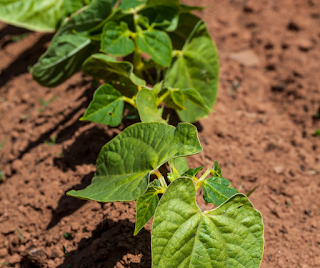Nitrogen (N) is an essential element for plant growth,
forming the structure of DNA and amino acids. While there is an abundance of
nitrogen gas (N2) in the atmosphere, in this form it is not available
for plant uptake and must be converted into nitrate (NH3) before it
can be used.
The nitrogen cycle demonstrates the conversion of nitrogen
gas to nitrate.
Legumes
Follow the path of nitrogen in the nitrogen cycle to find
the nitrogen-fixing bacteria. These bacteria convert the N2 in the
atmosphere into nitrate, making it available for plant uptake. Some of these
bacteria form a symbiotic relationship with plants called legumes. The bacteria
live in nodules on the legume plant roots and harvest the atmospheric nitrogen,
making it immediately available for the legumes to use.
You can see the root nodules if you carefully dig up a healthy
legume plant, as shown in our video Nitrogen Cycle I: Legumes. Good plants to select include clover,
lupins, peas and beans. Australian wattles can also fix atmospheric nitrogen; however,
they are less efficient than the legumes.
Compare a legume to a non-legume plant. You can see the
difference in the root structure of the plants, and the absence of root nodules
on the non-legume. This plant must harvest nitrate from the soil around it, as
it does not have the benefits of a relationship with the nitrogen-fixing
bacteria.
In the early days of farming and agriculture there were no
artificial fertilisers to provide a source of nitrogen for the crops. How could
the farmers have used the legumes to grow healthy plants? Find out more about crop
rotation by researching this topic.
Find out more about global cycles:
- Research further information about the nitrogen cycle and investigate more activities at our WASP online resources.
- Learn about environmental monitoring in your local environment and how to sample safely in the AusEarthEd video Field Water Sampling.
- Find out more about the impacts of fertiliser run-off on our lakes and rivers at the National Oceanic and Atmospheric Administration (NOAA).




